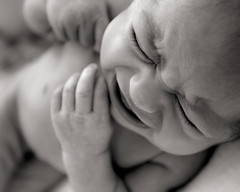This was Dave's Christmas gift from Amanda and we both read it (thanks Amanda)so I'll be the first one to review it.
This book should serve as a clarion call to all the naysayers who refuse to recognize the urgency of global warming in our world today. The book recounts one of this nation's worst environmental disasters- the dust storms that devastated the High Plains during the 1920-30s. At it's peak, the Dust Bowl covered 100 million acres and the dust darkened skies as far away as Manhattan! The Plains were a barren landscape, covered by tall grass, where the Native Americans had hunted bison for centuries. Thanks to the Homestead Act (1850s?)the U.S. government moved the Indians off the land and encouraged settlers to move west, promising them free land for farming (160 acres). The railroads, politicians, banks and newspaper editors also played a role according to Mr.Egan. He writes, "The flattest, driest, most wind-raked, least arable part of the United States was transformed by government incentive, private showmanship, and human desire from the Great American Desert into Eden with a haircut."
This is truly an amazing tale, told through the voices of people who actually lived through the dust bowl days. It is a story of government incompetence (sound familiar?), greed, ignorance, and denial that things were really as bad as they seemed. I couldn't help but see parallels with what is happening today as we experience climate change and hear the dire warnings about what that portends for life on Earth.
I highly recommend this book to anyone who cares about protecting the environment. The summation on the back cover says it best: "In an era that promises ever-greater natural disasters,
The Worst Hard Time is a powerful cautionary tale about the dangers of trifling with nature."
Hi - This is Dave adding to Jackie's post. I'm afraid my comments are pessimistic. Each reading of a new book on the subject of global land use seems to suggest a poor outcome. A suggested additional companion piece to "The Worst Hard Time" (WHT)is "COLLAPSE - How Societies Choose To Fail or Succeed" by Jared Diamond. The book is a little problematic in tying the whole story together, but the conclusions seem reasonably well supported.
WHT & Collapse seem to deal with an environmental issue more dire than global warming. WHT described an expanding population moving to marginal land and succeeding in good times and damaging the land to the point it could no longer be used (or it disappeared in the case of the Dust Bowl) in bad times.
Collapse saw peoples either move away or starve and disappear under similar circumstances across time in different areas around the world. Globally, we appear to be at the point where many lands can not sustain the existing population with easily predicted climatic variances like weather events and temperature & rain fluctuations. The case gets worse with an increase in population. In the U.S., we still have a lot of land that appears to be ripe for occupation, but is marginal. Think lowlands (New Orleans, coastal regions including NYC, river flood plains), arid lands (the central high plains, high lands above 3-4,000 feet, or lands serving a cleansing purpose like forests and wet lands. Resource practices (high consumption in U.S., Europe, Japan; lesser rates in rest of world) also have a large effect and the trend is bad. Developing countries aspire to the U.S. consumption model. Collapse estimates we can maybe double the world's population with all known resources and at current consumption rates. If the current global population consummed as the U.S. does, we wouldn't have enough resources to live at the current 6 billion person level. It suggests that the developed nations need to use far fewer resources than today because the rest of world will catch up to that rate in a short time. It also suggests the global population should stop growing. A global discussion on consumption and population appears to be the most pressing environmental issue (not global warming) but is unlikely to occur until the predictable conflicts over water, food and habitable land occur multiple times and the root causes become more apparent. Like I said, my conclusions (most of the preceding paragraph) are pessimistic but that should not take away from reading either WHT or Collapse. The better we understand the known situation, the greater chance we have of producing a better outcome.
 The Secret Life of Bees, by Sue Monk Kidd, was a book I'd had on the bookshelf for about a year and a half. I'm not sure if I ever picked it up, started it, and put it down, but I am certainly happy that I picked it back up again.
The Secret Life of Bees, by Sue Monk Kidd, was a book I'd had on the bookshelf for about a year and a half. I'm not sure if I ever picked it up, started it, and put it down, but I am certainly happy that I picked it back up again.

